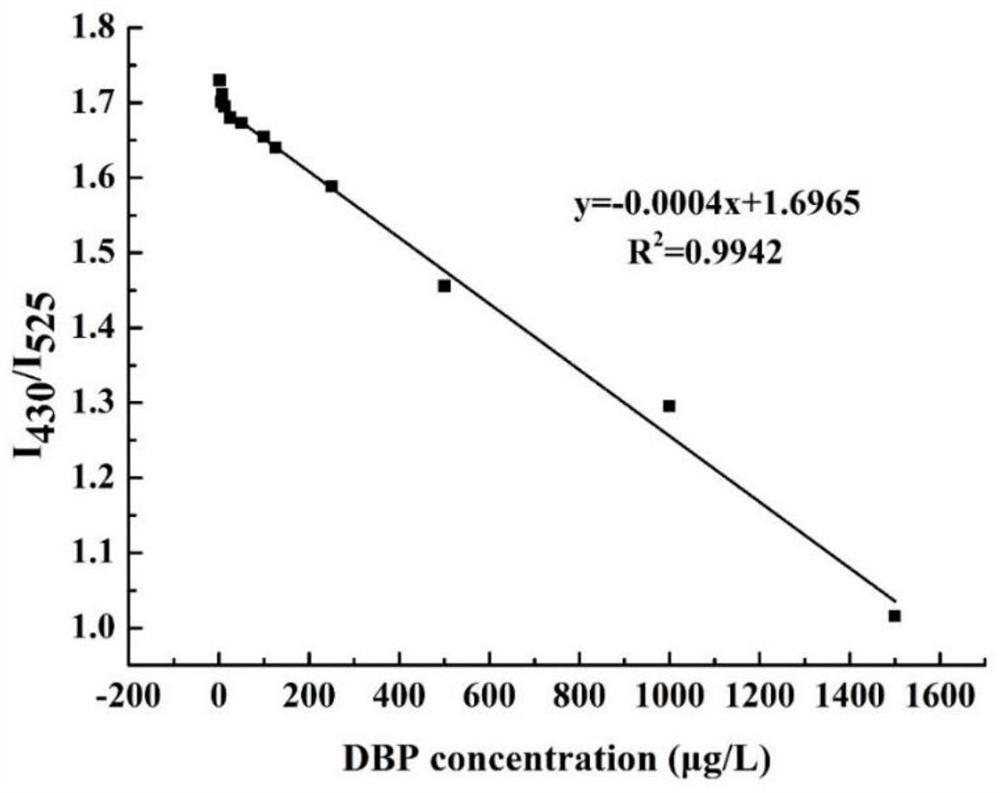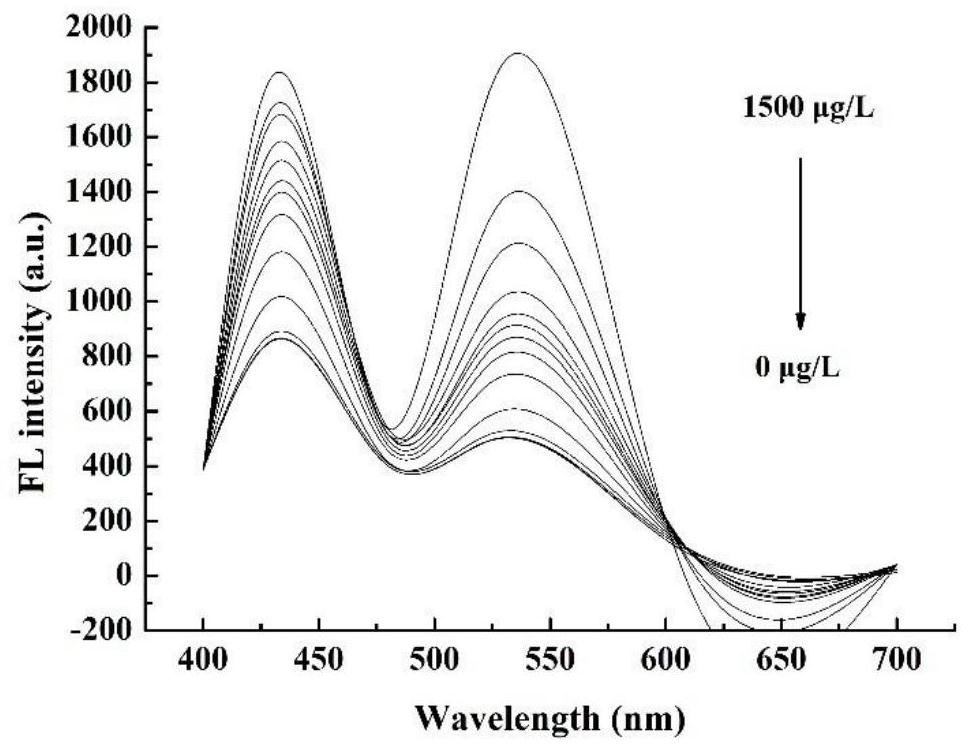A method for the detection of dibutyl phthalate by fluorescence ratio method based on double-emitting carbon quantum dots-labeled nucleic acid aptamers
A technology of dibutyl phthalate and nucleic acid aptamer is applied in the detection field of dibutyl phthalate and dibutyl phthalate by fluorescence ratio method, which can solve the problem of poor photostability and difficult fluorescence. Labeling and tracking, photobleaching, and high toxicity issues to achieve the effect of simple preparation, rapid screening, and improved selectivity and sensitivity
- Summary
- Abstract
- Description
- Claims
- Application Information
AI Technical Summary
Problems solved by technology
Method used
Image
Examples
Embodiment 1
[0054] 1. Preparation and activation of dual emission carbon quantum dots:
[0055] (1) Preparation of double emission carbon quantum dots: add 0.8 g of ascorbic acid to 13 mL of methanol and 7 mL of water, stir vigorously for 1 min, put the solution in a reaction kettle, and heat at 160° C. for 70 min. After cooling to room temperature, the solution was passed through a 0.22 μm filter membrane to remove larger aggregates, and finally a double-emission carbon quantum dot solution was obtained, which was stored away from light.
[0056] (2) Activation of double-emission carbon quantum dots: Dilute the double-emission carbon quantum dot solution obtained in step (1) with water, and the dilution ratio of carbon quantum dot solution and water is 1.2:30; take 500 μ L of diluted double-emission carbon quantum dots Mix the dots with 1mL water and 20mgEDC evenly, and react in the dark for 20min at room temperature, then slowly add 30mg NHS and gently mix and incubate for 10min to obta...
PUM
| Property | Measurement | Unit |
|---|---|---|
| concentration | aaaaa | aaaaa |
Abstract
Description
Claims
Application Information
 Login to View More
Login to View More - R&D
- Intellectual Property
- Life Sciences
- Materials
- Tech Scout
- Unparalleled Data Quality
- Higher Quality Content
- 60% Fewer Hallucinations
Browse by: Latest US Patents, China's latest patents, Technical Efficacy Thesaurus, Application Domain, Technology Topic, Popular Technical Reports.
© 2025 PatSnap. All rights reserved.Legal|Privacy policy|Modern Slavery Act Transparency Statement|Sitemap|About US| Contact US: help@patsnap.com


